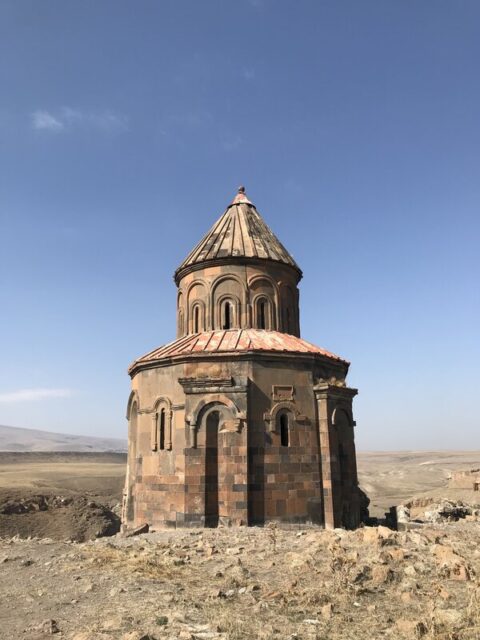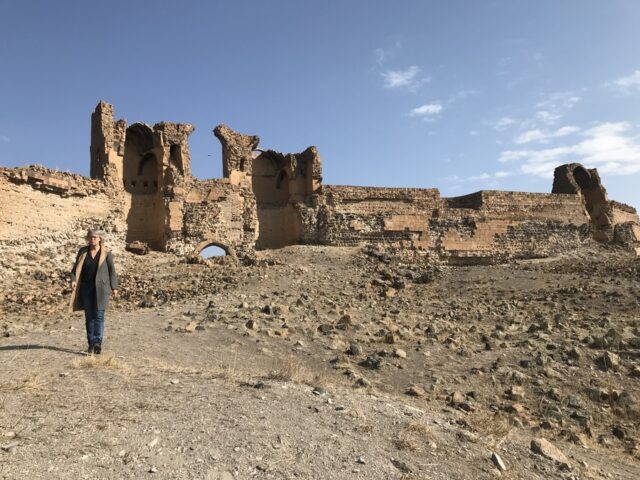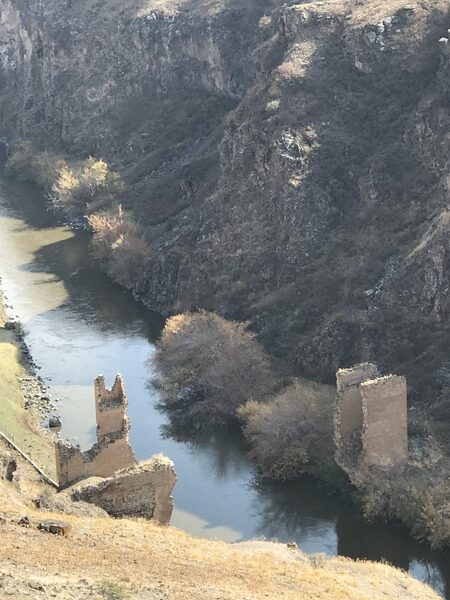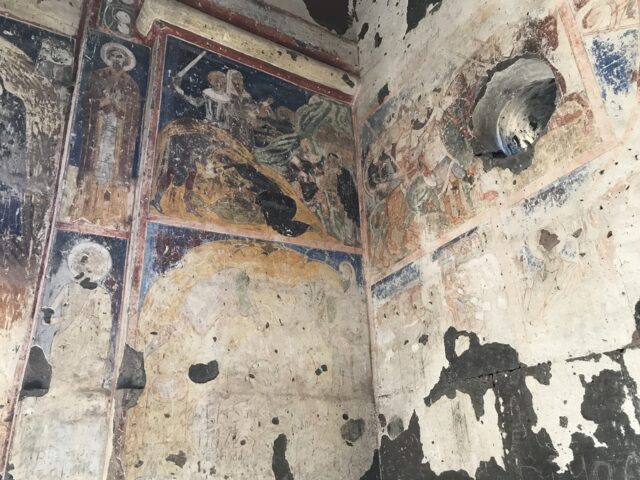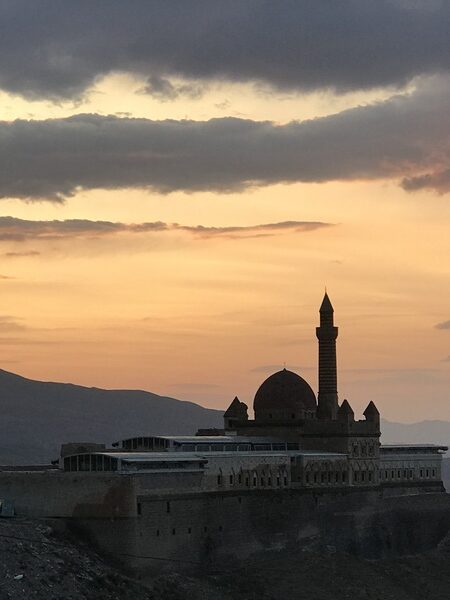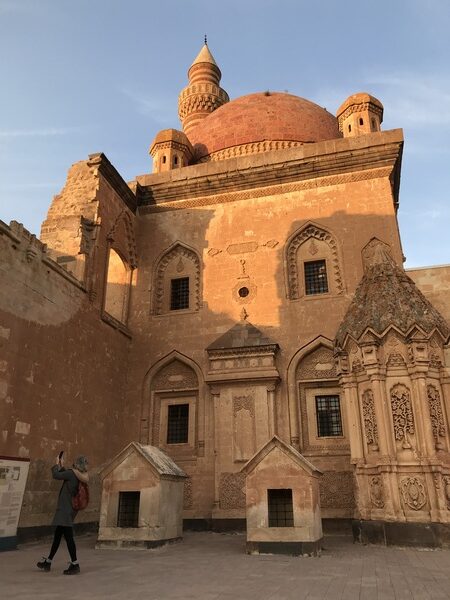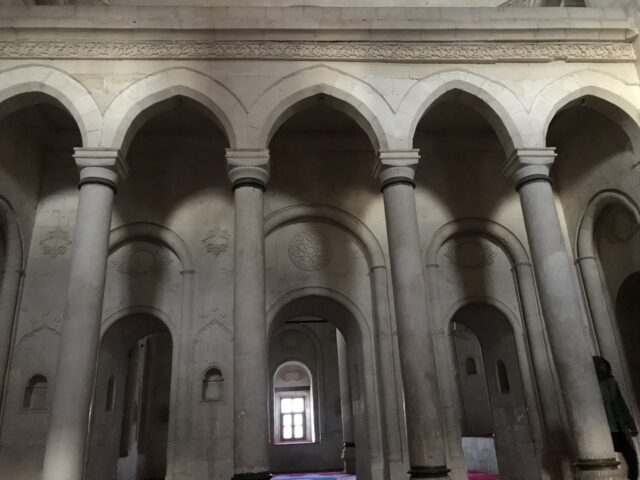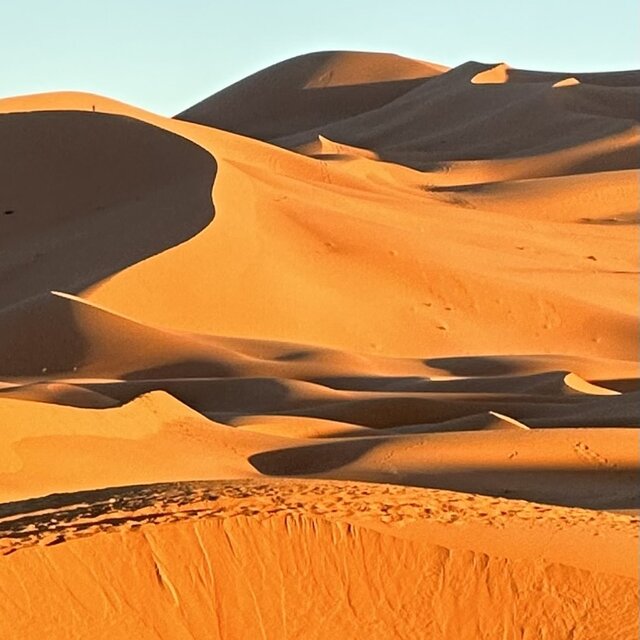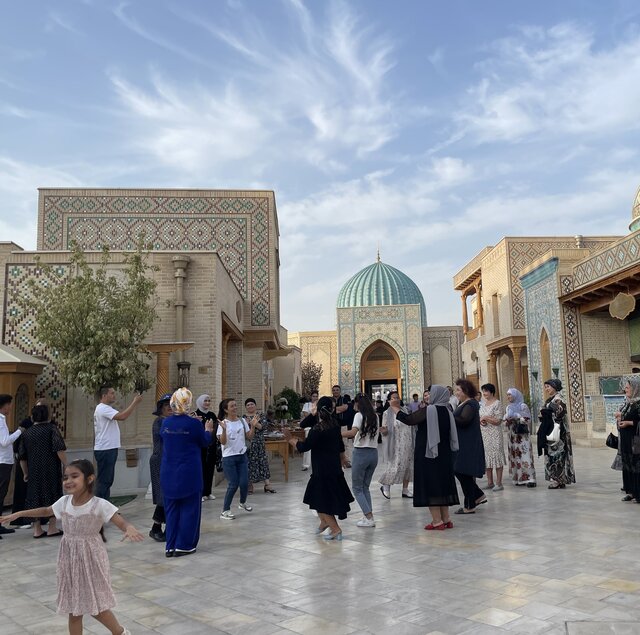Eastern Türkiye: The ruins of Ani and the Ishak Pasha Palace
I enjoy visiting places considered off the beaten track. It was wonderful to have had the opportunity to visit Vietnam, Luang Prabang in Laos and the Angkor ruins in Cambodia in the early 1990s when there were hardly any tourists, but Indochina of the 1990s is no more (although I hear Luang Prabang has stayed relatively less touristy). I also had the opportunity to visit the pyramids in Meroe in northern Sudan in 2011, having the place to ourselves when I visited it with friends. But Sudan is no longer accessible due to the violent civil war that broke out recently. Therefore, I am recommending Ani and the Ishak Pasha Palace in eastern Türkiye as places worth visiting, although they may not be the easiest places to reach. They are beautiful places that transport you to a bygone era. Globalization of tourism makes many places Disney-fied and awful. But Ani and the Ishak Pasha Palace are some of the few remaining places untouched by this commercialization.
Ani
Ani is known as the site of the ruins of an old Armenian Kingdom on the border between Türkiye and Armenia, and is a UNESCO World Heritage Site. An Atlantic article described it as a “walled metropolis”. Ani thrived in the 10th and 11th centuries, counting more than 100,000 residents at the time, thanks to being part of the Silk Road then. By the 1300s, it was in decline and was completely abandoned by the 1700s. While it was re-discovered in the 19th century, World War I and the Armenian genocide led to the region becoming inaccessible until the early 2000s.
When my friend and I arrived at Ani in the morning, we were the only ones there. The crumbling walls, damaged churches, and other structures were evocative of passage of history — of past prosperity, invasion, changing borders and the complexities of the region. Ani is located along the river that divides modern day Türkiye from Armenia. In the age of over-developed global tourism, we were lucky to have this place all to ourselves for a while. Of course, its relative remoteness and COVID helped (we visited in October 2020). Afterwards, a few other tourists arrived; they were mainly Turks, but there were also several Iranians. (The land border with Iran is not too far from Ani.)
While researching how to reach Ani, I realized that the closest city to Ani was Kars – the city where “Snow” by Turkish writer Orhan Pamuk, the recipient of the 2006 Nobel Prize in Literature, was set, so I was excited to have a chance to overnight in Kars on the way to Ani. Like Ani, Kars was ruled not only by the Armenians, but also by the Seljuk Turks and many others; in the late 19th century, Kars became part of the Russia Empire. You can still see old Russian architecture in Kars. Today, Kars has a mixed population of mainly Azerbaijanis, Kurds and Turks.
Ishak Pasha Palace
Another place not too far from Ani that I wanted to check out was the Ishak Pasha Palace in Dogubayazit, close to the Turkish-Iranian border. I first learned about the place in Cornucopia, a most wonderful magazine on Türkiye/things Turkic. The building of the palace started in 1685, and its completion took almost 100 years. It is perched on a hill, and its sight is beautiful from the many different angles — from the bottom, from your approach driving up the hill, and also from higher up the hill. We saw several couples in their wedding dress/gear, surrounded by their friends and having their photos taken in the palace — definitely a wedding photo worthy place. The palace has a prayer room/small mosque, a harem, courtyards, ceremonial hall, dungeons, etc. I particularly found the mosque area soothing. Watching the sunset from the palace, and seeing the palace bathed in that light, was absolutely beautiful. The palace is on the tentative list of UNESCO’s World Heritage Site. It turns out there are 79 sites in Turkey that are on the tentative list of UNESCO’s World Heritage Sites. If the other 78 sites are as gorgeous as the Ishak Pasha Palace, I’d love to visit all those places.
Mount Ararat
On the drive between Ani and Dogubayazit, you can see Mount Ararat, the highest peak in Türkiye. Mount Ararat is in fact the national symbol of Armenia and has been considered a sacred mountain by Armenians, but ironically, it is now situated on the Turkish side of the border. I learned this many years ago through a movie called “Ararat” directed by my favorite filmmaker, Atom Egoyan (who is Armenian-Canadian). I didn’t expect to actually see Mount Ararat with my own eyes then, and it made me feel both amazed and sad to see it during this trip. Mount Ararat is also known as where Noah’s Ark landed after the deadly flood. (This is disputed by some scholars, who say the Old Testament meant the place to be Armenia, and not specifically the mountain.) The coat of arms of Armenia depicts both Mount Ararat and Noah’s Ark.
Logistics
There are a number of ways to visit Ani and the Ishak Pasha Palace (there are some brilliant blogs of independent travelers you can consult). What my friend and I did was as follows: fly from Istanbul to Erzurum (Erzurum itself is worth at least a half day visit); rental car from Erzurum to Kars (overnight in Kars); drive from Kars to Ani; drive from Ani to Dogubayazit (overnight); drive from Dogubayazit to Ishak Pasha Palace; drive from Ishak Pasha Palace to Van (overnight); fly from Van back to Istanbul. We would have preferred to take a train from Istanbul to Kars, but that train was not operating when we wanted to travel. The train was not operating possibly because it was during the COVID period, but it is known to be one of the scenic train routes in Türkiye. Rather than relying on public transport, it is probably best to rent a car to travel in eastern Türkiye. Google maps was useful for navigation. English is really not spoken (except in hotels). Luckily my friend spoke a little Turkish.
Security and regional issues
East and particularly southeastern Türkiye is the Kurdish area, so it will be wise to check the current situation before traveling, since at times, there are tensions/conflict between the Kurds and the Turkish government forces. Near the Armenian border, especially driving from Ani southwards, it’s best not to take photos, since there are a number of Turkish military posts along the way. Taking photos in Ani is no problem. Conflict between Armenia and Azerbaijan flares up from time to time, but the border skirmishes between those two countries do not take place close to the Turkish border, so that conflict should not affect your travel to this area. The land border crossing with Iran is in southeastern Türkiye so you will find road signs to Iranian cities, particularly Tabriz, while you drive in the area; there is no serious tension – so far – between Türkiye and Iran.
Where next?
Where I would really like to visit next is Patagonia and Greenland, before any further glaciers melt away. Patagonia has been on my bucket list for decades, and during this time, much of the glaciers have already melted and changed the scenery.
Born in Yokohama, Japan. Went to an international school in Yokohama, then to university in Tokyo and graduate school in London. Worked at the United Nations since 1991, both at the headquarters in New York and several peacekeeping operations (Cambodia, Bosnia and Herzegovina, East Timor and Sudan).

